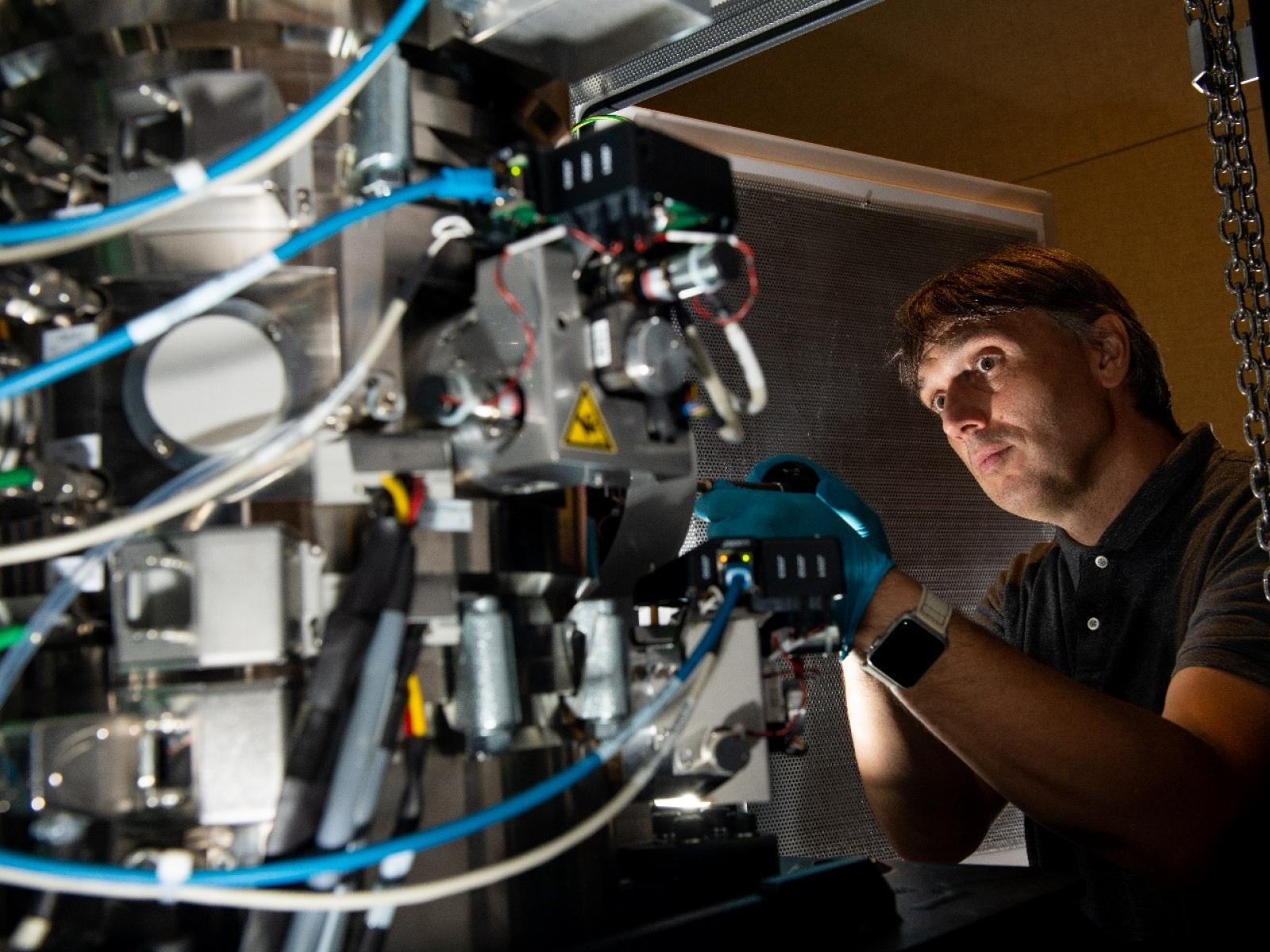Kovarik Named Inventor of the Year
Materials scientist honored for contributions to electron microscopy

Inventor of the Year Libor Kovarik inserts a sample into a transmission electron microscope.
(Photo by Andrea Starr | Pacific Northwest National Laboratory)
Libor Kovarik never set out to be an inventor. Nevertheless, the materials scientist and electron microscopist had ideas about how to improve electron microscopy. Nine U.S. patents later, Pacific Northwest National Laboratory (PNNL) named him the 2020 Inventor of the Year on September 30, 2021.
“Receiving this award is definitely the highlight of my career,” said Kovarik in his acceptance speech. He also named several colleagues: Nigel Browning, Andrew Stevens, and Andrey Liyu, as important collaborators for developing this intellectual property.
“Libor is an exceptionally talented and thoughtful scientist,” said Lou Terminello, the Associate Laboratory Director of the Physical & Computational Sciences Directorate at PNNL. “His intellectual property will help advance the electron microscopy that is so critical to our understanding of structures at an atomic level. This is a well-deserved honor.”
Kovarik, who has worked at PNNL since 2010, has a PhD in materials science and engineering. His research focuses on characterizing energy-relevant materials using electron microscopy. His patents center on improving scientists’ ability to obtain useful transmission electron microscopy data under challenging conditions with delicate samples. These innovations will help researchers understand a wider range of materials at an atomic level. They involve both methods development and device creation.
A key component of Kovarik’s intellectual property is a new approach to compressive sensing. Compressive sensing is a mathematical technique that allows researchers to reconstruct a signal from sparsely measured data. This shortens the amount of time needed to make measurements and lessens the dose of electrons a sample receives. Lower electron doses are particularly important for scientists working with sensitive samples.
Kovarik plans on continuing to innovate and make electron microscopy better. “I find the moments where I get to see a new idea work incredibly rewarding,” he said.
Published: October 25, 2021